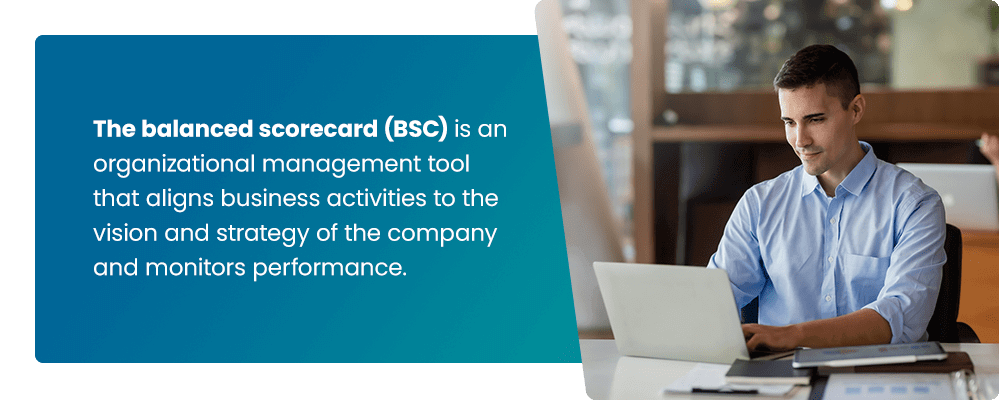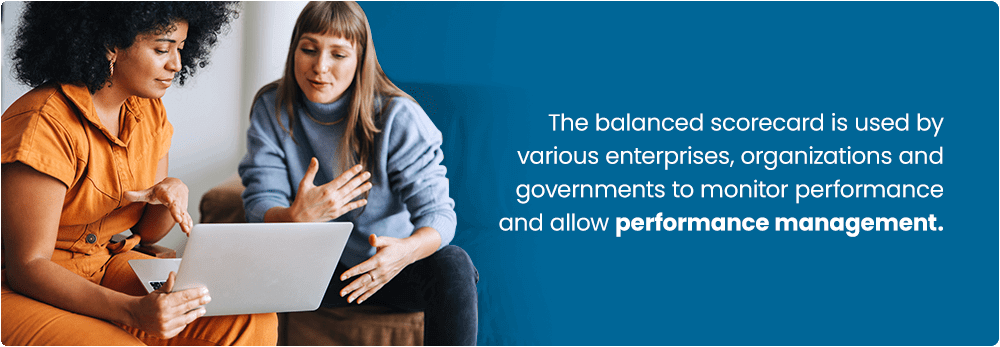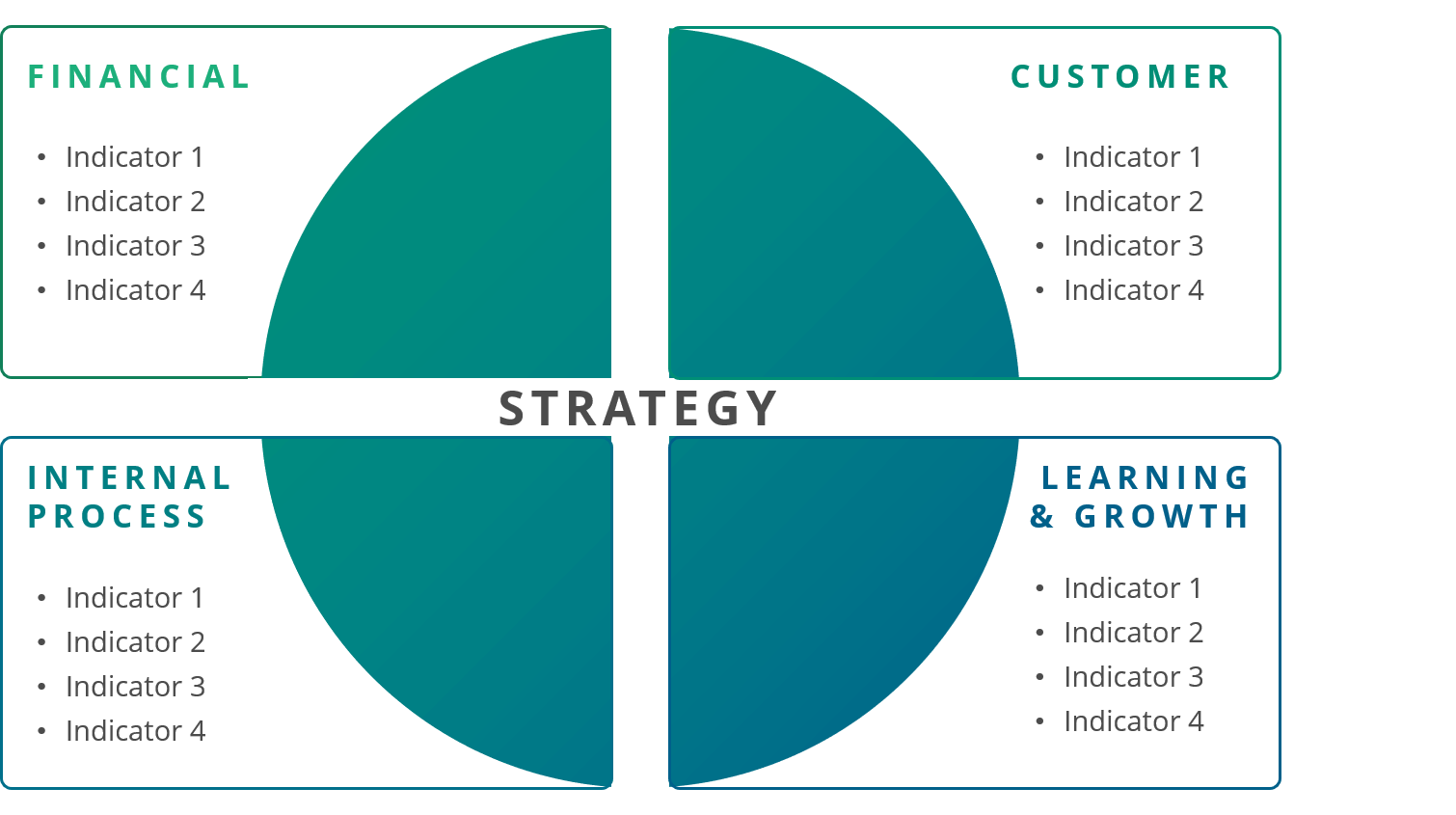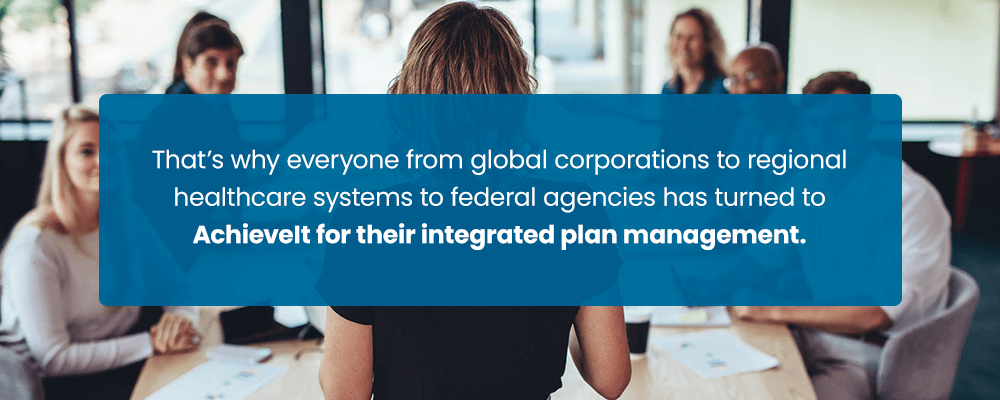Organizational approaches to planning and execution vary wildly from one organization to the next. Even among similar organizations and like-minded individuals, approaches can be night and day. While this is true of the planning process, the plan’s structure follows a similar path. Some organizations have tried-and-true methodologies. Others elect for the flavor of the week, month, or year that was presented at the latest industry conference.
While many of these methodologies come and go, the balanced scorecard remains consistent. The balanced scorecard method spans nearly every industry by small and large organizations. A study by Bain & Co. suggests that almost half of all organizations in North America use it as the focal point to determine strategic initiatives. According to a 2GC Balanced Scorecard survey, 73% of companies reported using the balanced scorecard as either “extremely helpful” or “very helpful.”
If you play any role in your organization’s strategic planning, you’ve probably heard about it at some point. But do you understand the basics of the balanced scorecard and how it can significantly benefit your organization?
In This Article

What Is the Balanced Scorecard?
The balanced scorecard (BSC) is an organizational management tool that aligns business activities to the vision and strategy of the company and monitors performance. The BSC was established by Dr. Robert Kaplan of Harvard University and Dr. David Norton. Their goal? To measure organizational performance using a more balanced set of performance metrics. Historically, companies focused on short-term financial performance as the most critical indicator of success. The balanced scorecard focuses on crucial, non-financial strategic metrics.
The balanced scorecard provides a comprehensive view of the organization by considering financial and non-financial metrics, such as customer satisfaction, internal processes, learning, and growth. The balanced scorecard approach ensures strategies are developed to stimulate long-term success within companies, assisting them in establishing development areas, planning improvement methods, uncovering inefficiencies, and defining strategic objectives and priorities.
A Harvard Business Review article mentions that the BSC is similar to the dials and indicators in an airplane’s cockpit. Pilots require precise information about numerous aspects of the flight to perform the challenging task of navigating and flying an aircraft.
They need data on fuel, altitude, airspeed, and destination, as well as other indications that describe the existing and projected environment. Relying on a single instrument might be less than ideal. Similarly, the complexity of managing a company now necessitates managers’ ability to simultaneously assess performance in several areas.

Who Uses the Balanced Scorecard?
The balanced scorecard is used by various enterprises, organizations, and governments to monitor performance and allow performance management. It’s more successful for established organizations with several years of operation, as it leverages historical performance data to map out future goals based on feedback.
Various executive team members and department leaders, such as project managers, human resource managers, and account managers, use the BSC to make educated choices inside the organization. Developing learning lessons and training, anticipating financial growth, and approving strategies are examples of such judgments.
Organizations will occasionally pay third parties to conduct surveys and generate reports. External businesses collect and analyze the data and make suggestions using BSCs. They assist organizations in identifying challenges that impede operational effectiveness and developing solutions for future improvement.
You may design your own BSC or employ a professional service to improve your customer base and revenues through prioritized performance-enhancing measures.

The Balanced Scorecard Perspectives
The balanced scorecard advises analyzing an organization from four different perspectives. These perspectives develop strategic plans that give indicators of the current and predicted environment:
1. Financial or Stewardship Perspective
The financial or stewardship perspective analyzes financial performance and the use of financial resources. A few metrics in this perspective include revenue growth, asset value, and ROI.
2. Customer and Stakeholder Perspective
The customer and stakeholder perspective analyzes performance from the perspective of the customer. A few metrics in this perspective include customer satisfaction, customer retention, and new customer acquisition.
3. Internal Process Perspective
The internal process perspective analyzes the quality and efficiency of performance related to the product, services, or other critical business processes. A few metrics in this perspective include production time and implementation time.
4. Organizational Capacity or Learning and Growth Perspective
The organizational capacity, or learning and growth perspective, analyzes human resources, technology, culture, and other capacities essential to breakthrough performance. A few key metrics in this perspective include employee satisfaction and employee retention.
Benefits of the Balanced Scorecard
With so many organizations adopting the BSC, it’s clear that there are advantages. Here are a few:
-
- Provides structure: A BSC provides structure and direction for strategic planning and does so in a balanced way. It’s a starting point for strategic planners to develop objectives, strategies, KPIs, and the tactics that support them.
-
- Establishes alignment: The top-level strategy can cascade throughout the organization starting with those four perspectives. Departments and business units have the ability to develop their own strategic scorecards that align with the organization’s higher-level strategies. Proper alignment has been proven to strengthen buy-in and adoption.
-
- Enhanced communication: A BSC helps communicate the strategy and goals of the organization to employees, stakeholders, and other interested parties, improving the overall understanding and alignment of the organization.
-
- Better resource allocation: Organizations can allocate resources more effectively by prioritizing initiatives based on their impact on key performance metrics.
-
- Improved performance: The BSC provides a comprehensive view of performance by considering financial and non-financial metrics. This helps organizations identify areas for improvement and track progress toward their goals.
-
- Better decision-making: It provides a structured framework for decision-making, helping organizations make data-driven decisions based on relevant performance metrics.
Balanced Scorecard Examples
Here are a few examples of how organizations in different industries can use the BSC to improve performance and align their activities with their overall strategy and vision:
-
- Financial: Financial institutions may use BSCs to align their performance metrics in customer satisfaction, internal processes, learning and growth, and financial performance with their overall strategy and vision.
-
- Healthcare: Healthcare facilities may use BSCs to monitor and improve their performance metrics for patient satisfaction, quality of care, financial performance, and employee satisfaction.
-
- Government: Government institutions can employ BSCs to align their monetary policies, financial stability, community development, and operational efficiency with their overall strategy and vision.
-
- Nonprofit: NPOs can use BSCs to monitor and improve their performance metrics for donor satisfaction, program impact, volunteer engagement, and financial performance metrics.
-
- Commercial: Commercial organizations may use BSCs to monitor and improve their performance metrics of customer satisfaction, operational efficiency, brand equity, and financial performance.

Improve Your Company With AchieveIt
Bridge the gap between your organization’s plans and the execution thereof with AchieveIt — a platform large organizations use to get their biggest, most essential initiatives out of the boardroom and into reality. But what does it take to actually guide these initiatives through to completion? You’ve got to:
-
- Get everything in view so you can see what’s happening with every initiative, at every level, from the enterprise to the individual, in real-time.
-
- Get everyone engaged, from corporate leadership to project teams, with an easy-to-use platform that keeps everyone responsible and on the same page.
-
- Get every possible advantage not only because you have the premier platform in this space but because you can draw on the experience and best practices of our execution experts.
That’s why everyone from global corporations to regional healthcare systems to federal agencies has turned to AchieveIt for their integrated plan management. Let’s actually do this. Request a demo to learn more about AchieveIt strategic planning software.
Ready to improve your plan execution?
Organizations of all types leverage AchieveIt to manage, execute, and connect their most important initiatives. Replace manual processes & siloed systems with interconnected plans in a single, automated platform.



